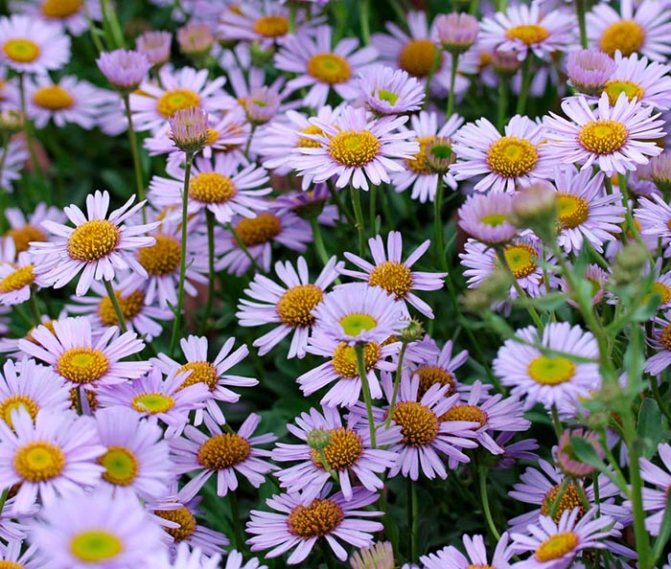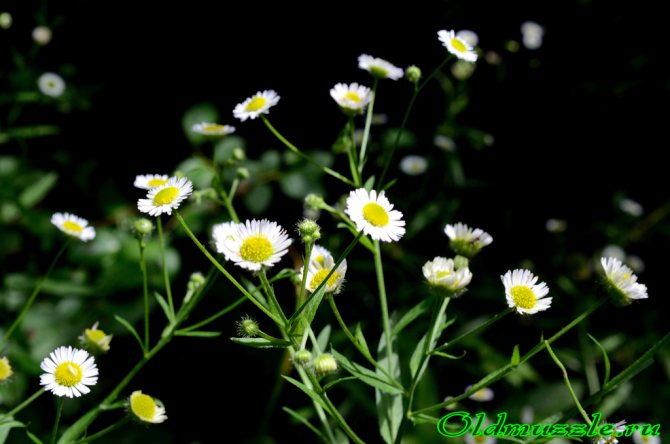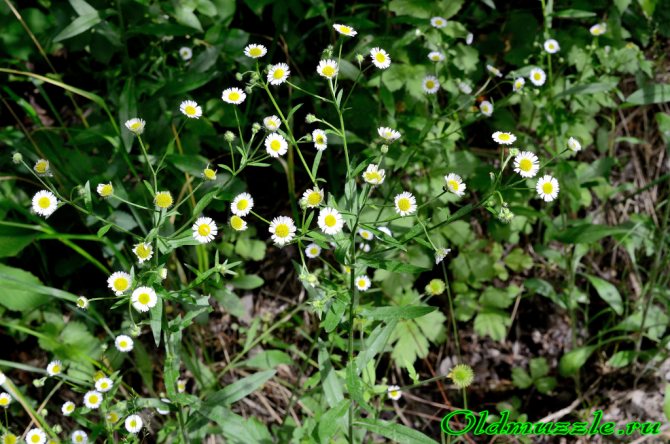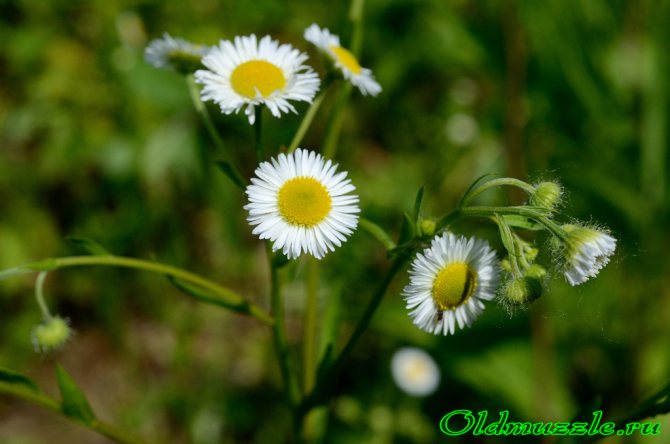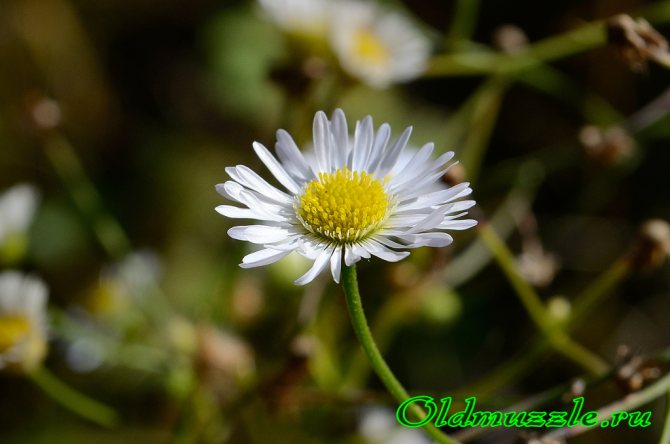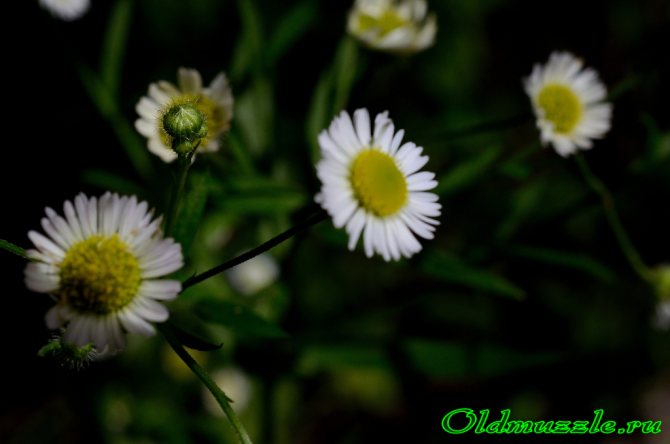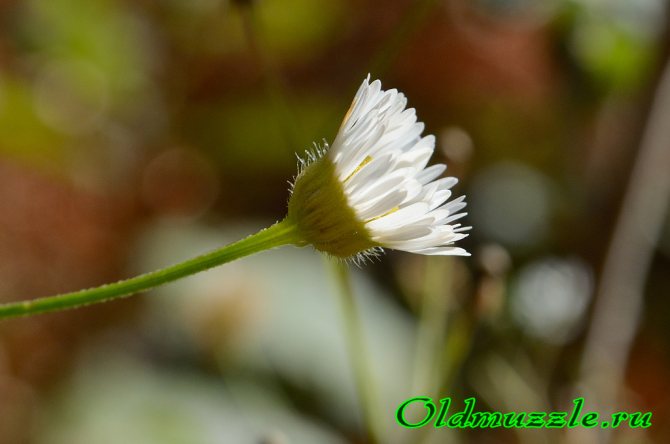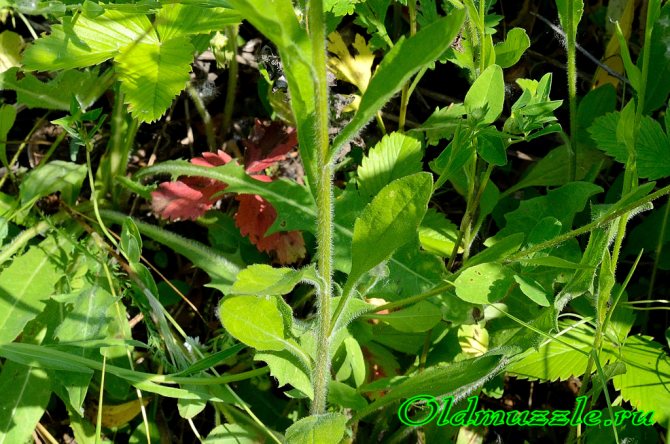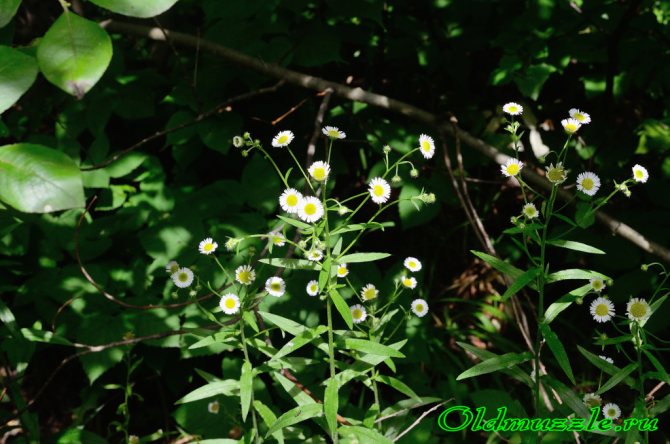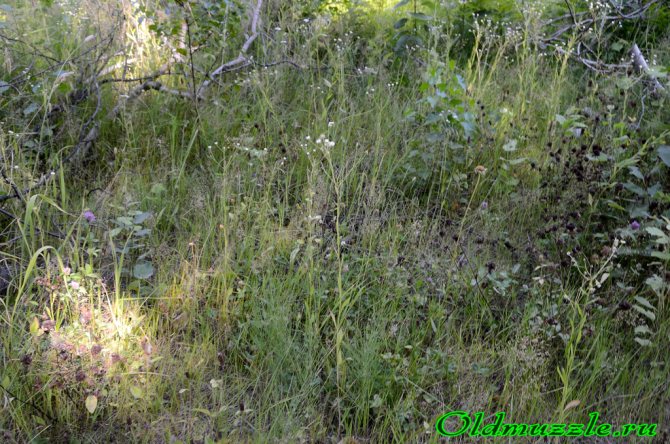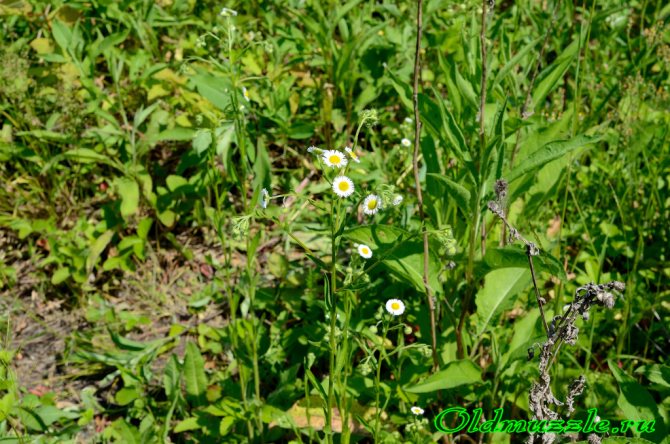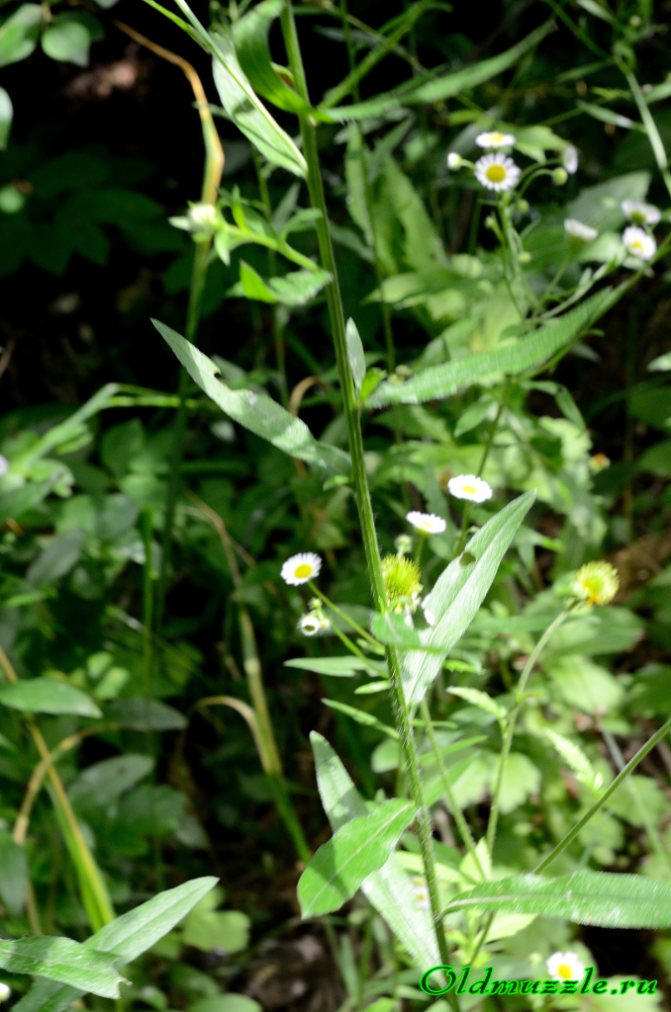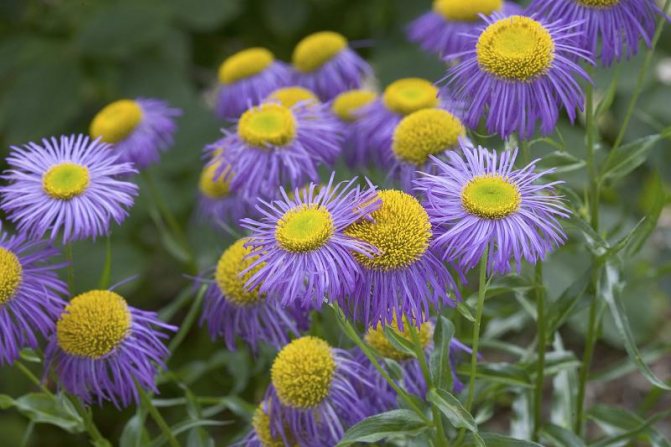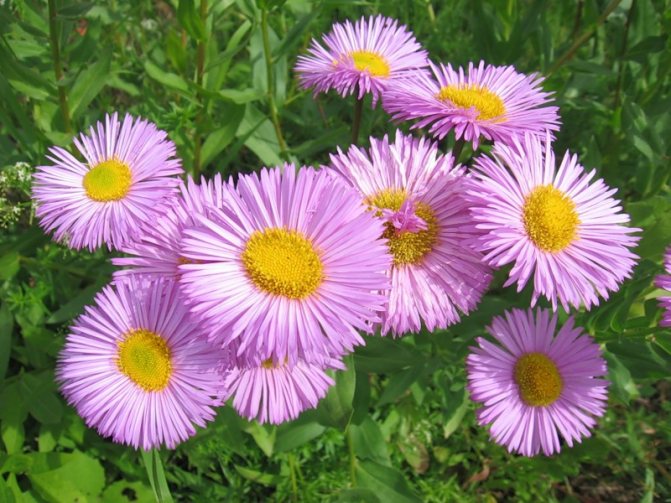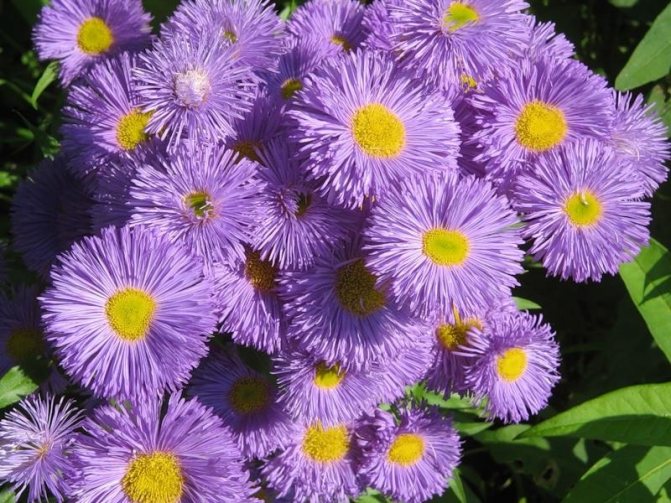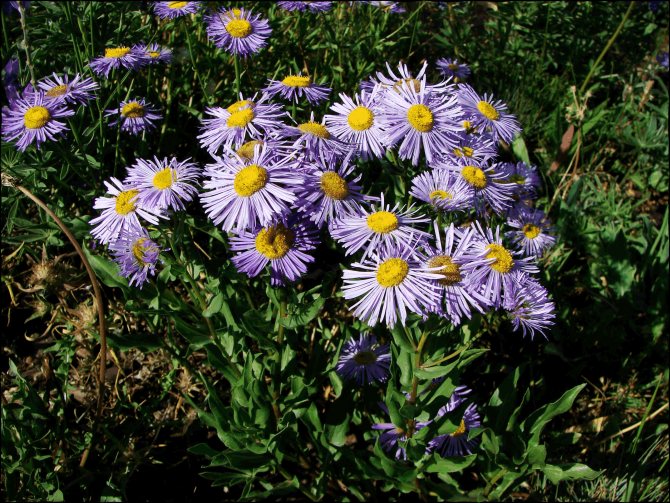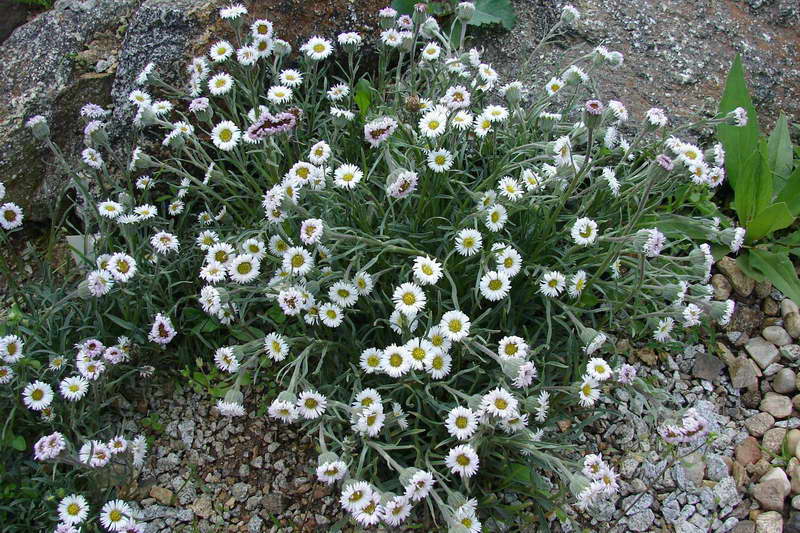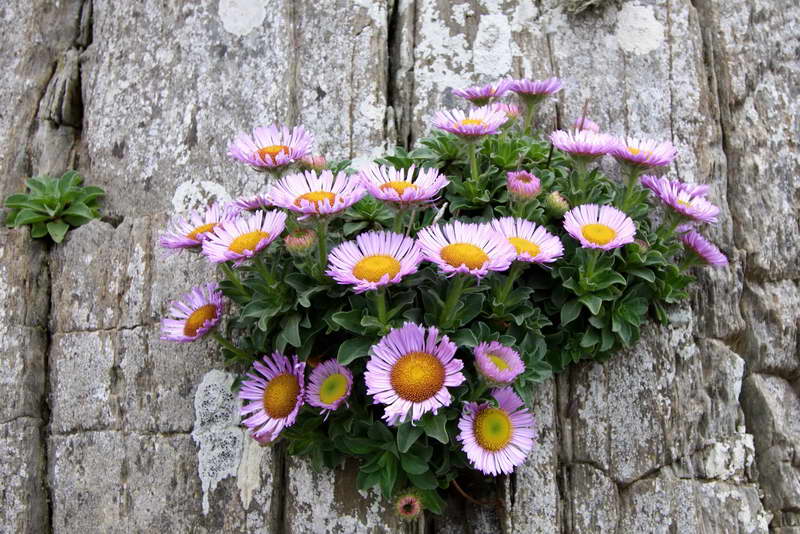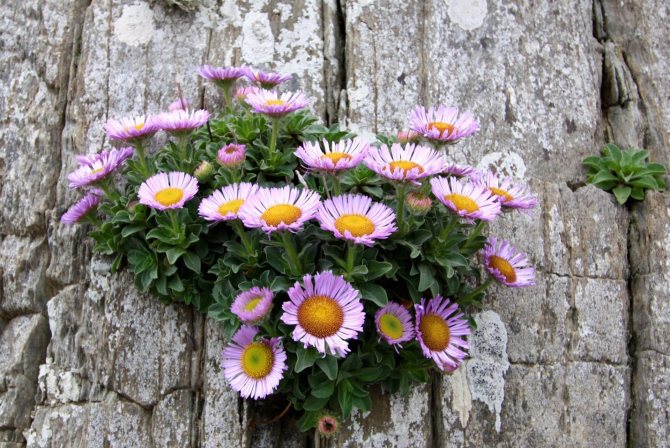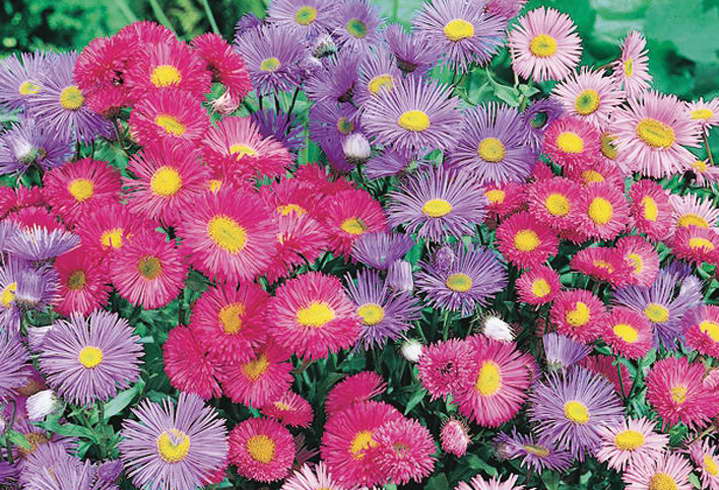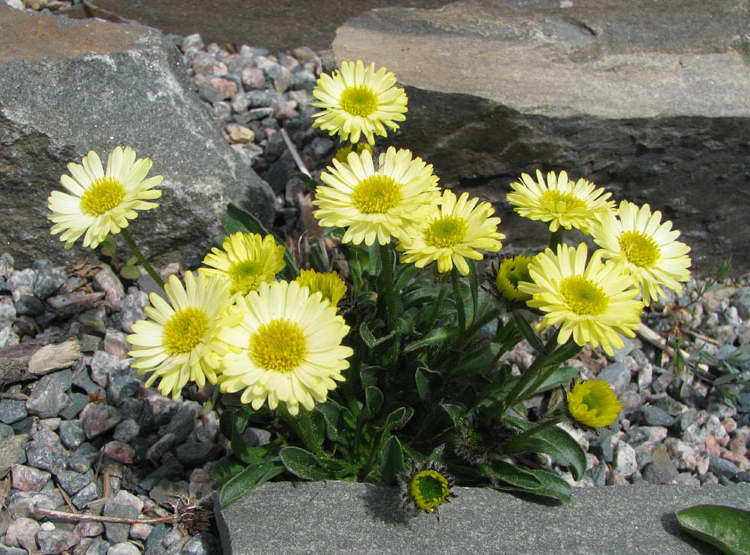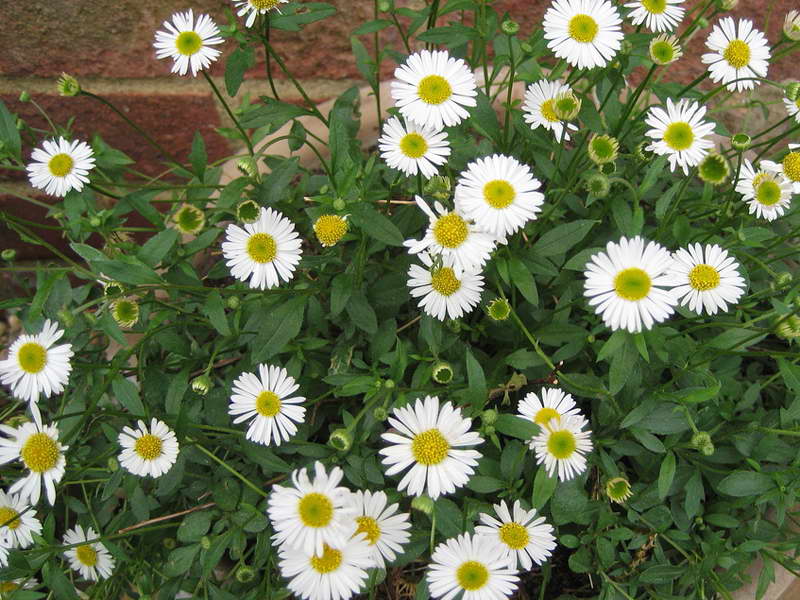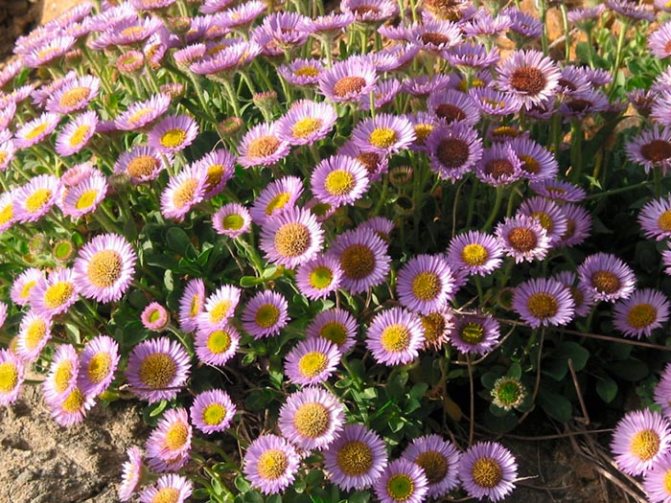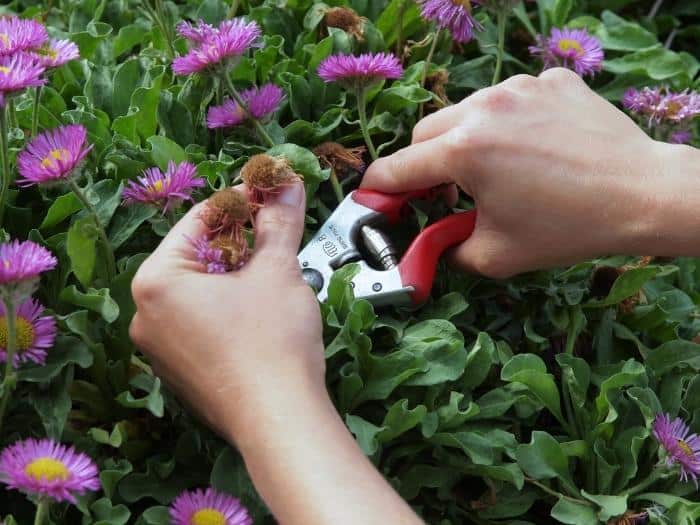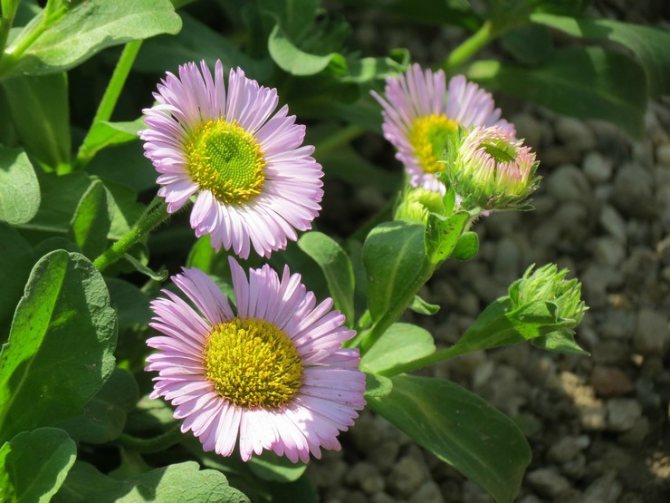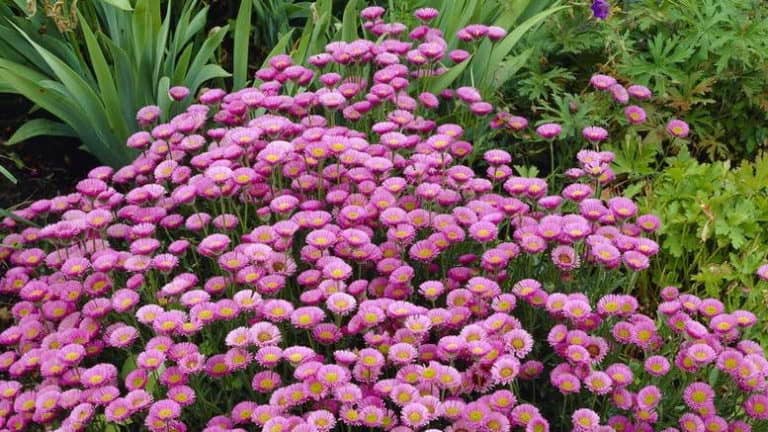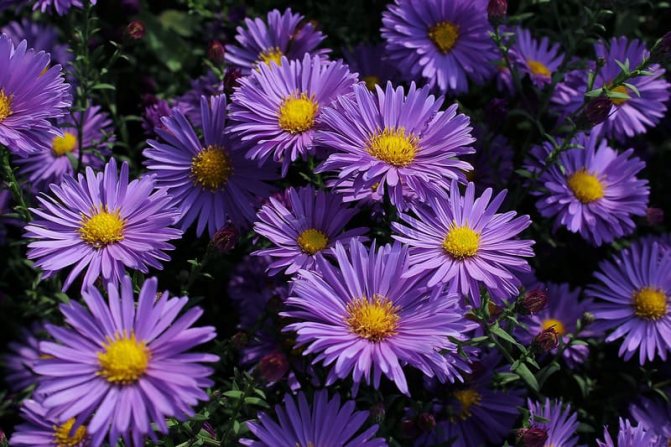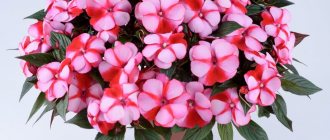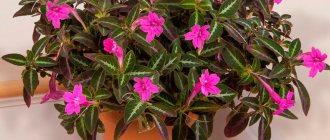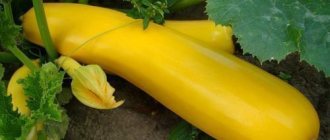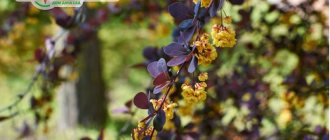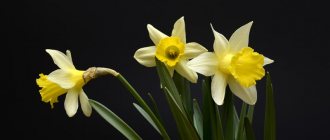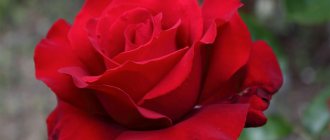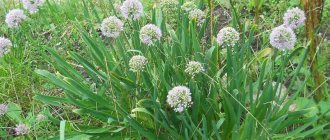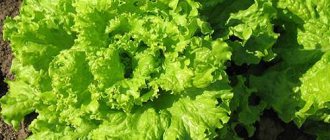Small petals (Erigeron) belongs to the Astrov family. It is a perennial herb with small flowers formed by very small reed petals. Hence the name - Melkolepestnik.
To many, this plant is known under the name Erigeron, which literally means "Early elder": it means the early ripening of seeds.
Small petal canadian: description
This is an annual herb. It reaches a height of different sizes, from 30 to 160 cm. Photos of the canadian small petal are presented in this article.
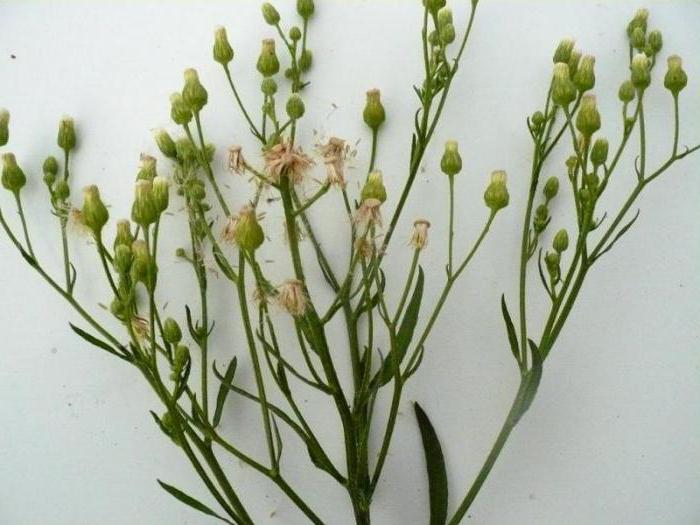
Description:
- The stem is long, straight, directed upwards. The color is green or reddish.
- Most of the leaves are collected in the root zone, and closer to the top, their number is sharply reduced. Each leaf is oblong, covered on both sides with small fluffy fibers. The shape is lanceolate, the length reaches 10 cm.
- The flowers of the canadian small petal are collected in baskets and collected in the upper part of the stem. Their colors are different: white, blue, pink or purple. The lower flowers are somewhat larger than those located above.
- Seeds are represented by elongated achenes with a tuft of long hairs. Develop from August to September;
- The root system is rod-type, short, with lateral appendages. The surface of the root is wavy. The underground part contains a small amount of useful substances, so it is completely useless for medical purposes.
The plant begins to bloom in the month of June, ends in September.
Fine petal Erigeron speciosus
Fine petal Erigeron speciosus
Family - Astral. Homeland - western part of North America
There are more than 200 species in the genus Melkolepestnik. The most common in ornamental gardening is the beautiful small petal. Popularly, this plant is affectionately called "cilia" for the narrow petals of the marginal flowers of the inflorescence-basket. The small petal is beautiful - a perennial plant with a horizontal rhizome. The internodes of the rhizome are small, and the plant forms a rather dense bush. In spring rosette leaves appear from the ground; they are rough green lanceolate with a smooth edge. In mid-May, erect, weakly leafy stems with a loose paniculate inflorescence appear from the central rosettes. Chamomile flowers up to 5 cm in diameter bloom at the ends of the panicle in early June. The height of the peduncle is 60 cm. The flowering of the bush lasts more than two weeks. Various varieties of small petals bloom throughout June. The marginal flowers of the plant can be painted in lilac, lilac, bright and pale pink, white tones. Tubular flowers are yellow.
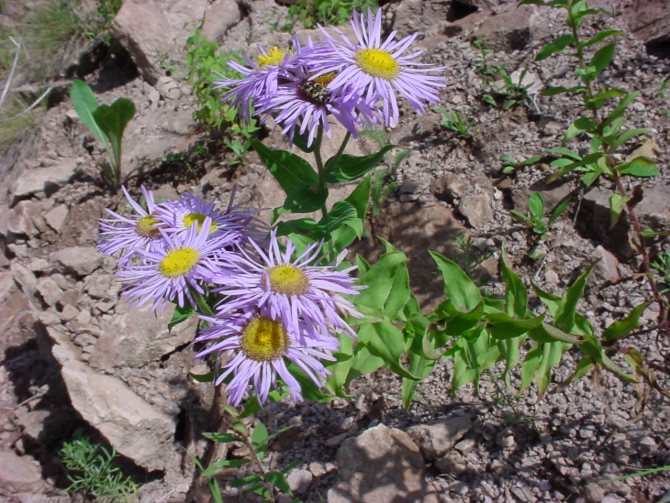

Cultivation:
Location: Small petals are planted in the sun or in partial shade. The soil should be loose, humus and fertile.
Temperature: In the middle lane, small-petals hibernate without shelter, but during severe winter frosts, individual plants may fall out. To reduce the risk, in the fall, the root system must be mulched or covered with lutrasil.
Watering: At the beginning of the season, small petals require a constantly moist soil. They do not like excess moisture in the soil. The soil should be moderately moist until the end of the season. In July, they are able to withstand heat and light drought.
Landing: Small petals are planted in the first half of the season, but preferably in the spring before flowering. It is also possible to plant in August, when small rosettes appear from the soil at the base of the stems, which will bloom next year. When planting, a planting hole with a depth of about 30 cm is filled with fertile humus soil with the addition of one tablespoon of complete mineral fertilizer and a glass of ash.
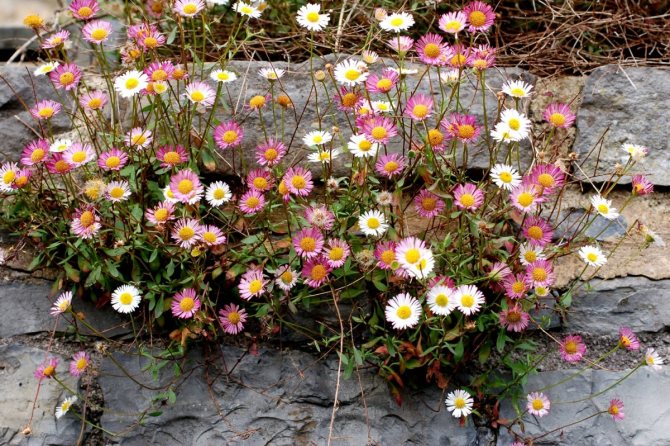

Soil: Small petals grow well on any moisture-permeable fertile soils.
Reproduction: Vegetatively and by sowing seeds. The vegetative way is to divide the bush, preferably at the beginning of the season. Reproduction is possible by rooting outlets in the spring. They are separated from the main bush and rooted in partial shade on moist soil, covered with a piece of lutrasil. Seeds sprout easily. They are best sown indoors in March without prior preparation. Seedlings appear in 10-12 days. Seedlings bloom in the 2nd year.
Diseases and pests: In cool, damp weather, as well as during spring floods, small petals can die due to their susceptibility to rot. Spider mites, slobbering pennies, and scoop caterpillars are also harmful.
Maintaining appearance: During flowering, the stems need to be tied lightly. After flowering, the stems are cut off.
Growing features: Small-petaled bush grows quite intensively and, with good care, after 3-4 years requires replanting and division. It is possible to reduce the size of the plant by separating part of it without digging out the entire bush. It is best to do this in the spring, while the stems are not higher than 20 cm.If the bush has to be divided during flowering, when transplanting, the stems with flowers are cut to a height of 15-20 cm.
Application: Go well with gypsophila, peach-leaved bell, spotted phlox.
Varieties:
There are varieties with double flowers. The variety 'Dunkelste Alle' ('Duncelste Alle') has double dark purple flowers, at 'Zommerschnee' - white, at 'Rose Triumph' - bright pink double, at 'Lilafee '(' Lilafee ') - lilac-blue semi-double.
Where is common
Canadian small-petal nevertheless has the properties of a weed: it is unpretentious to the surrounding conditions and is able to grow in any place. For example, it can be found on sandy soils, burnt-out forests and fields, along the banks of rivers, lakes, ponds, on the sides of the roadway, and pastures. In a word, those places that are unsuitable for other plants are completely suitable for Canadian small petals.


Cuttings
Use by cuttings if bushy varieties are propagated. A young and strong shoot with a "heel" - a small area of the rhizome, is separated from the base of the rosette (often simply broken out). For rooting, it is planted in a separate bed.
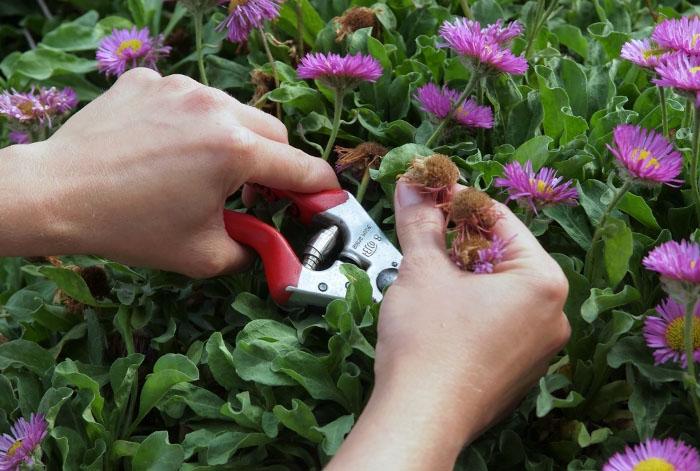

After planting, the base of the cutting is sprinkled with sand and shavings. Moderately, but regularly, until complete rooting, the cuttings are watered. The appearance of new leaves and shoots will indicate that the plant has grown stronger and can be transplanted into a flower garden.
Some types of small petals are distinguished by poor survival rate of cuttings. In this case, practice cutting off the tops of the stem (obliquely). Soon, new shoots will appear below the cut site, which can later be used for cuttings.
A bit of history
Small petals were brought to the territory of Russia and Europe from North America.
The story of his penetration into Paris from America is very interesting. In the middle of the 17th century, a stuffed bird was brought to the French capital from Canada, the inside of which was filled with dry small-petaled grass. By the way, this bird was a gift to the then king - Louis 14. When it came time to change the filling, the dry grass along with the seeds was thrown out into the street. The seeds fell into the ground and laid the foundation for the growth of small petals in European countries.


The grass has completely taken root and has grown throughout the territory. Moreover, the medicinal properties of the plant were not immediately discovered, so they simply exterminated it as a harmful weed.
Seed reproduction
Spring sowing
The seeds of erigeron sprout slowly, so it is not worth delaying with their sowing. Do this in March or early April.
Sowing is carried out in containers in moist soil. The seeds are spread over the soil surface and slightly buried. After sowing, the container is placed in a bright cool (10-15 ° C) place.
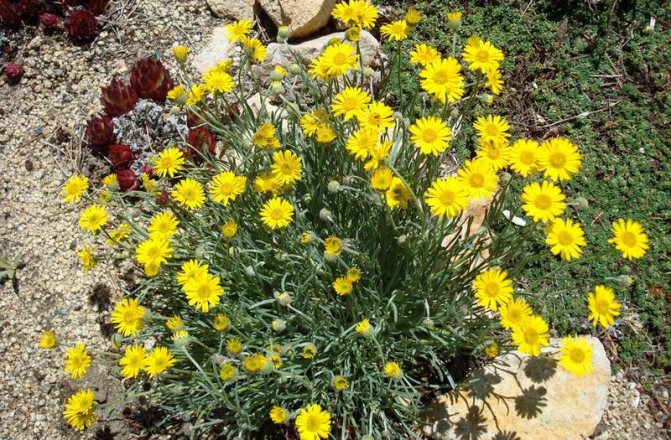

A month later, thin and fragile seedlings will appear. They are carefully watered with warm water. When the seedlings get stronger, a pick is carried out.
In May, when the danger of spring frosts has passed, young plants are transplanted into flower beds at a distance of 25 cm from each other. For better survival, the seedlings are transplanted together with a lump of earth.
After planting, young plants are regularly watered.
First-year plants do not differ in strength, so it is better to close them for the winter.
Autumn sowing
In autumn, sowing is carried out in open ground. The site for planting is prepared in advance: they dig up and loosen the soil well. Then markings are made in the form of small rows.
The rows are spilled with water, after which the seeds are placed in them, sprinkling with a small amount of earth.
Bloom will come next summer.
Beneficial features
Small-petal Canadian - a medicinal plant. It contains the following effective components:
- essential oils;
- resin;
- flavonoids;
- tannins;
- tannin;
- choline;
- gallic acid;
- ascorbic acid.
In the complex, all these substances give the plant a healing effect, which is equated to the action of pharmaceutical drugs. Therefore, the use of canadian small petals brings positive results in treatment.
Place in the garden landscape
Low-growing or lush hybrid species of small petals can be found in the role of an ampel plant. They are planted in flowerpots, hung in balcony boxes, pots on verandas and terraces.
Bright thin petals of flower baskets will decorate any flower bed: mixborder and rabatka, alpine slides and rocky gardens.
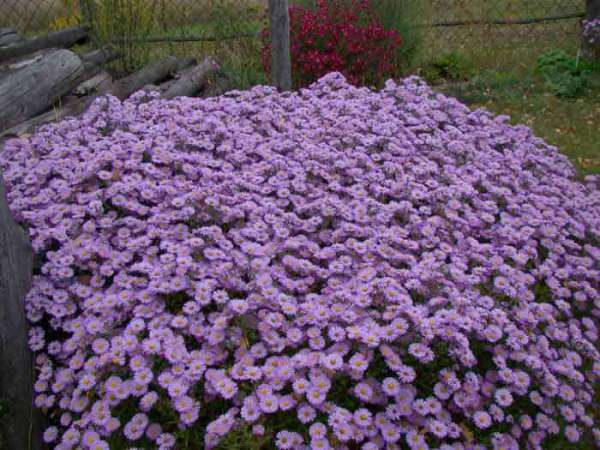

Contrasting perennial and annual flowers together with erigeron will create a mood and a beautiful composition. Plant other types of asters, marigolds and zinnias, irises and phloxes nearby.
Ornamental shrubs will set off modest shrubs, adding a background. This plant will also become the central figure on the lawn, refresh the frontal plan, it is planted along winding and straight paths.
What diseases does a decoction of the plant treat?
A decoction is made from the herb of canadian small petals, which brings excellent results in the treatment of many ailments.
- Various types of bleeding (pulmonary, uterine, from wounds). This is possible due to the astringent properties of the plant.
- Diarrhea.
- Gout and arthrosis. Small petals are able to reduce the amount of lactic acid in the muscles, as well as relieve joint pain and inflammation. In the treatment of gout, a beneficial property is the ability of the plant to remove salts from the body.
- The herb has a good diuretic effect, which is very useful for some diseases, as well as for those who are on diets.
- A positive result will bring the use of a decoction of the plant for unbearable pain in the spine or osteochondrosis.
- Small petals components normalize the work of the gastrointestinal tract, relieve stomach inflammation.
- Reduces inflammation in the eye area.
- Treats diseases of the genitourinary system: cystitis and prostatitis.
- Small petals are also effective in case of poisoning.
Modern pharmacology does not provide for the addition of small petals components to medications. But it is actively used in traditional medicine.
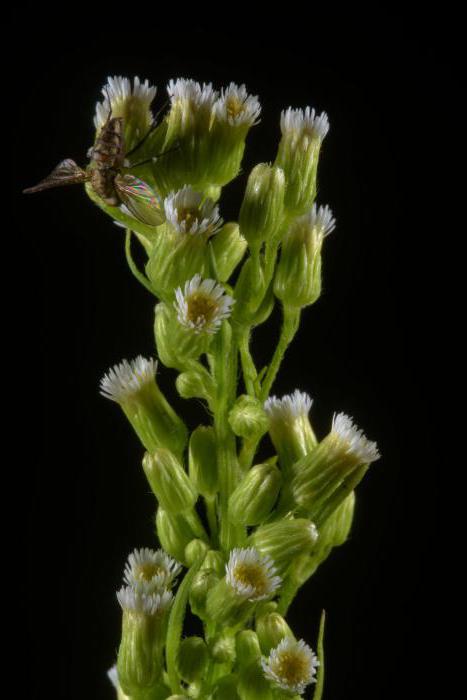

Medicinal compositions prepared on the basis of this plant are not addictive, therefore they have a long course of use.
Possible difficulties in caring for small petals
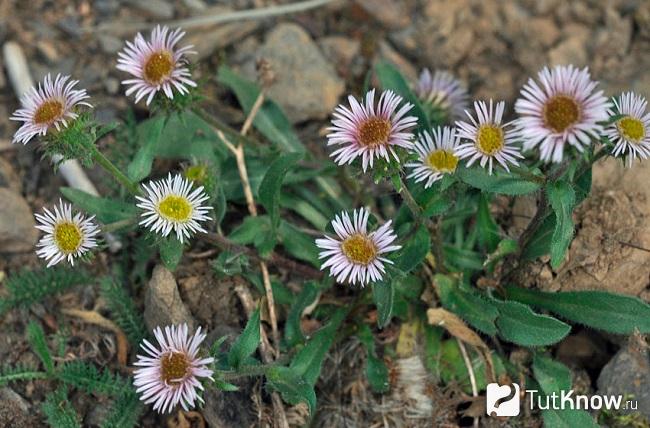

You can delight flower growers by the fact that the coastal aster does not suffer from attacks of harmful insects, but this cannot be said about diseases. If the temperature in the spring-summer period has dropped significantly and the weather is damp for a long time, then the plant can be affected by rot of fungal origin. They can be:
- Rust,
when dark brown spots are formed on the leaf plates. - Powdery mildew,
in which the foliage is covered with a cobweb-like whitish bloom, reminiscent of a lime solution.
If the disease is noticed at the initial stage, then all the affected parts of the small petals are removed, and then the bushes are treated with 1% Bordeaux liquid or another fungicidal preparation. As the latter, you can take Fundazol. Re-processing will be required after 10 days. Some gardeners recommend sprinkling coastal aster bushes with ash, but if the damage is very severe, then the entire aboveground part is cut off and burned.
Canadian small petals for hair strengthening
Cosmetics are also prepared from small petals that have a positive effect on hair growth and strength. After the course of application, positive changes are noted: the hair becomes thick, strong and strong.
A decoction of canadian small petals is prepared as follows:
- 30 g of dried herbs are poured with a liter of boiling water and boiled for about 15 minutes. The boiled broth is infused for 3 hours. With a ready-made herbal composition, rinse your hair regularly for 1 month after each shampooing.
However, all products prepared on the basis of this herb are contraindicated for pregnant and lactating women.


Choosing a place for growing
Erigeron grows on any soil. If possible - give preference to light and drained. On them, it develops and looks better.
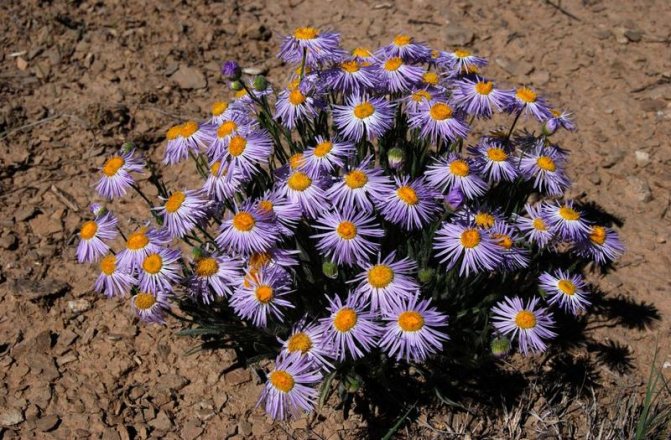

Open, well-lit or slightly darkened areas are ideal for plant placement. A draft is acceptable, but waterlogging of the soil is unacceptable. At high humidity, in damp places and when it is darkened in small petals, all forces are spent on the growth of shoots and foliage, and there are few flowers.
How to collect a plant
When preparing a decoction of canadian small petals, all of its aerial parts are used: leaves, stem and flowers.
Harvesting must be carried out in the middle of summer, when the plant is filled with useful components. The canadian small petals are cut not at the root, but somewhat higher, where the stem is thinner. The thickened stem and root contain a small amount of medicinal components, so it is not at all necessary to touch them when collecting.
After harvesting, cut plants must be sorted: the leaves must be separated from the flowers and stems. All parts of the small petal are dried in different ways: leaves and flowers are laid out on paper in a thin layer. From above, you can cover the raw material with another sheet of paper or simply put it in the shade. The stems are collected in bundles and hung from the ceiling in any dry, well-ventilated area.
Once all the plant parts are completely dry, they need to be collected and placed in a box. You can store dried grass in this state for no more than 1 year.
Definition formula
Genus:
On one plant, all the baskets are the same - baskets with many flowers - the flowers in the basket are tubular, and at the edges they are pseudo-ligate - there is no milky sap - flowering shoots with normal leaves - marginal flowers with a well-defined reed limb, clearly differ from the median tubular ones - the marginal flowers are white, middle yellow - alternate leaves - multi-row wrapper -
view:
baskets 10-15 mm in diameter - racemose inflorescence - marginal flowers in a basket 1.5-2 times larger than a wrapper - marginal flowers are white two-row.
Growing tips
The small-petal is unpretentious - it loves the sun, but it will also tolerate a light shade, it will withstand slight frosts, it will grow in almost any area, it will even put up with alkaline soil. However, it is better to take care that the land is well-drained, fertilized, but not overabundant, and avoid dampness. With sufficient light, the bushes will bloom more readily.


Popular new varieties of perennial small petals
Perennial carnation - planting in the garden and care
This flower is a real decoration of the flower bed. It is suitable for ampel cultivation, therefore, it is used to decorate the facades of houses. A large number of varieties allows you to choose the right color of flowers, height and bushiness.
Erigeron Rose Treasure: Growing from Seed
Erigeron Rose Treasure is very similar to an aster in shape, and it is quite easy to grow it from seeds. The color of the flowers can be of different shades of pink with a constant yellow center.
Erigeron Foster Leibling
Erigeron Foster Leibling has rather wide rough leaves with towering powerful stems, densely covered with large flowers of intense pink color. Their diameter can reach 5 centimeters, and the number of petals is formed by semi-double inflorescences.
Daisy-leaved small petal
The peculiarity of this variety is that during flowering, the color changes from pink to white and then back to a rich raspberry color. The small-petal daisy-leaved blooms profusely, forming a dense cover of flowers in the flower bed.
Small-petaled Azur Beauty
The small petal variety erigeron Azur Beauty has a beautiful pinkish-bluish color of flowers that are similar in shape to asters. Flowering is quite long - throughout the summer. The resulting seeds, which fall into the ground the next year, provide new seedlings of the plant.
Small-petaled Rose of July
The peculiarities of this variety are that their flowers have elongated marginal petals. The size of the inflorescence of the small-petaled Rose of July is quite large, which increases the decorative effect of the plant.
Types and varieties
The most popular varieties of small petals are considered to be:
Erigeron Karwinskith. The bushes of this plant rarely exceed a height of 15 centimeters, but at the same time it can grow up to 60 cm wide.At the beginning of flowering, the petals are light pink, but every day they seem to fade from the sun's rays and turn white with crimson tints. The photo of flowers is simply mesmerizing.
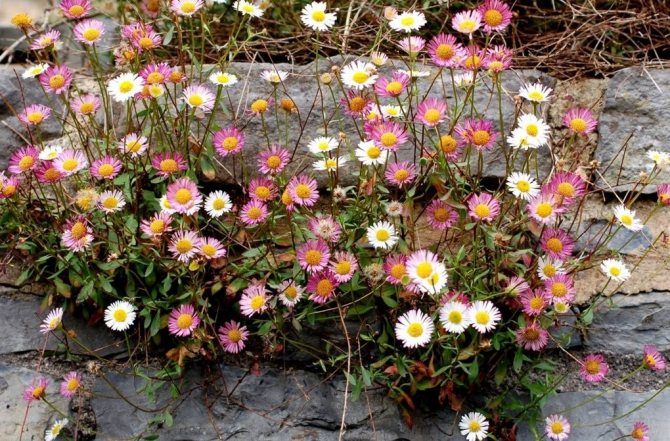

Pink diamond... This species is distinguished by abundant flowering, and the flowers themselves are pink-purple. Differs in the need for regular tying, since the lateral shoots are creeping.
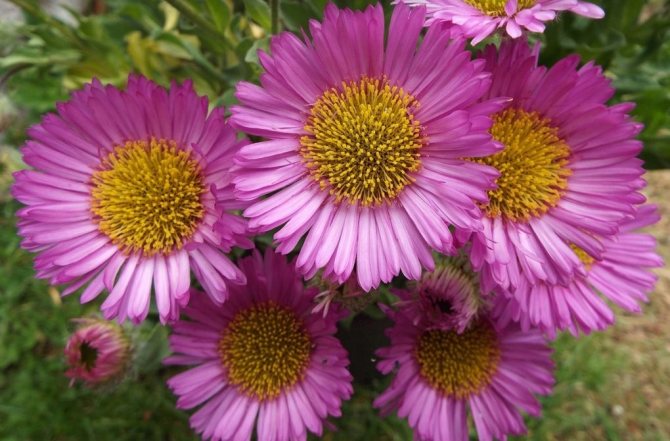

Agra treasures... Belongs to the category of a perennial frost-resistant plant, with a bush height of up to 60 centimeters. A distinctive feature is the numerous miniature inflorescences. The shades are different and create a mosaic effect.
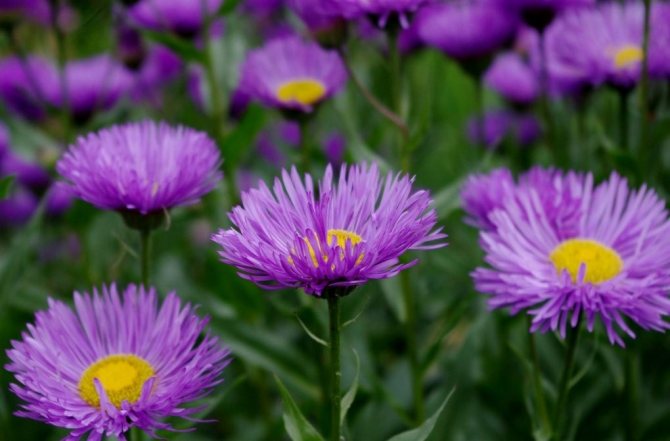

Pink treasure... One of the tallest varieties of the small petals erigoren - the height reaches 70 centimeters. Flowers can be pink and crimson with a yellow core. Erigeron pink blooms in two stages: July-August and September-October;
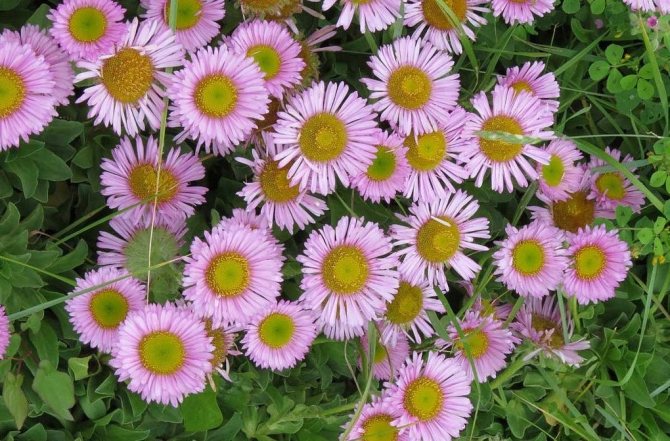

Rose of July. This type of plant is considered hybrid and at the same time includes complex care (you must always monitor for possible drying out of the soil and protect it from pests).
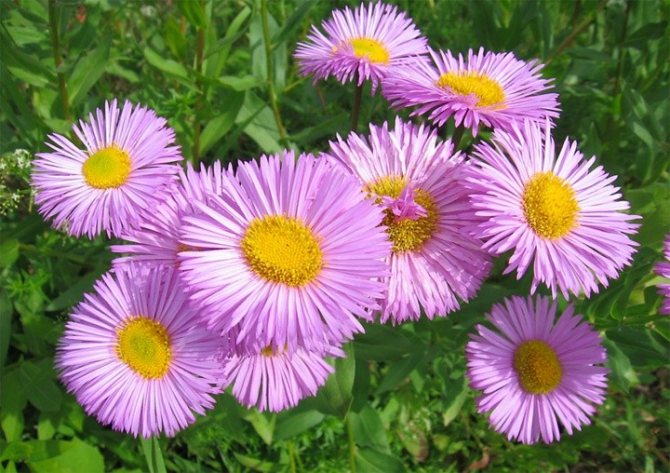

Orange petal... The height of the bush is average - within 50 centimeters. Petals are oval and large-flowered. It is popular with novice florists.
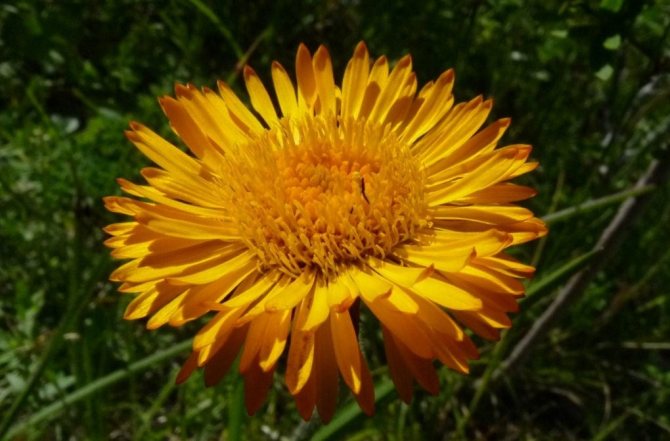

Diseases.
It has already been written above that Small-petal does not tolerate excess moisture. Therefore, the plant is prone to developing various types of rot.If the rot did not have time to strongly affect the flower, treatment with fungicidal solutions will be sufficient. In the case of a large lesion, it is recommended to destroy the diseased specimens. Pests rarely infect this flower, but if insects appear, it should be treated with insecticides.
Small petals are a bright decoration of the garden area. An unpretentious and hardy flower can complement any composition and make it more harmonious.
- this is a bright decoration of the garden area. An unpretentious and hardy flower can complement any composition and make it more harmonious.
Planting a plant on the site
Erigeron loves loose nutrient soils. Acidity is not critical. But it is important that the place on the site is well lit by the sun. Usually, seeds are planted in early spring, although sometimes planting is also used before winter.
Seedlings are grown according to the following scheme:
- Fill a large container with suitable soil. Moisten the ground.
- Spread the seeds evenly, pressing lightly into the soil.
- Place on a balcony or loggia. It is important that the area is cool but well lit.
- Cover the container to protect future seedlings from direct sunlight.
- Water regularly, but in small portions of warm water.
Erigeron's seeds
With proper care, expect seedlings in about a month. After the appearance of 2 leaves, dive the seedlings. It can be planted on the ridge in June. Root the bushes at intervals of 25 cm on the site. Provide the plants with good watering for the first time.
Reproduction of small petals by dividing the bush
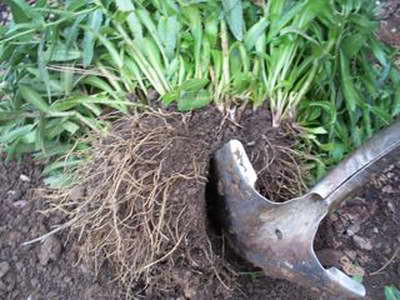

How to split the erigeron bush photo
It is much easier to propagate the plant by dividing the bush. Choose an overgrown large bush (2-3 years old), dig it up in early spring and divide it into several shares and immediately plant it in the ground. Young shoots with their roots (called heels) also root well. Such rejuvenation should be carried out every 5 years, which also helps to overcome excess vegetation.
The distance between plants should be at least 35 cm so that the roots grow normally and do not impoverish the soil.
Care
This plant is great for those flower growers who cannot or do not want to devote most of their free time to caring for plants.
In order for this plant to please its owners for a long period, it is enough to follow some recommendations, namely:
- the soil should be alkaline and at the same time light;
- it is unacceptable for the soil to dry out or be excessively wet. One rule must be remembered - everything should be in moderation;
- a well-lit area is an excellent condition for growth;
- it is recommended to sprinkle with ash around the bush;
- if any lesions are detected (for example, the trunk begins to turn yellow), it will be better to treat it with 1% Bordeaux mixture in a short time;
- if any part of the flowers begins to wither due to drought or, on the contrary, overflow, it is better to cut it off.
Fulfilling these recommendations, small petals will delight the eye for at least 5 years.
Growing erigeron from seeds
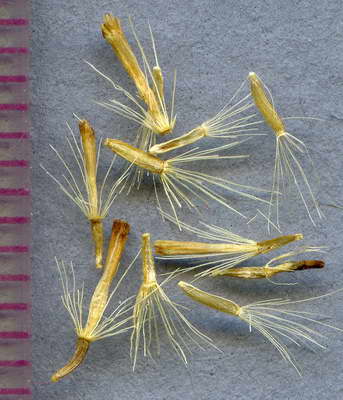

Erigeron seeds photo
Planting erigeron seeds in spring and autumn in the ground
Reproduction is carried out by seeds and dividing the bush. Seeds can be sown in spring and late autumn. Sowing is possible as early as possible in the spring, at the first opportunity to go out into the garden. In the fall, they try to wait for the cold dry weather after the Indian summer, so that the sown seeds do not sprout until spring.
For the northern regions, it is advisable to grow seedlings and plant them in the garden after the retreat of severe cold weather. Not all seeds germinate, so stock up on more.
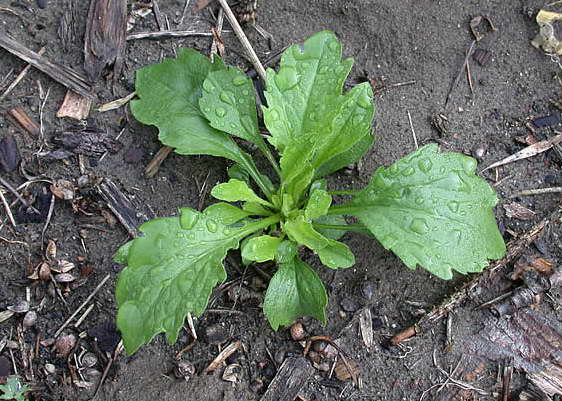

How to plant erigeron seeds in the ground
To sow small-petaled seeds in the ground:
- Prepare the bed, dig it up, let the earth settle, level the surface with a rake.
- The seeds are very small, so the planting depth is small, 1-2 cm.
- The distance between the rows is 25-30 cm, between the seeds in a row - as rarely as possible, so that later they break through less. However, given the poor germination rate, this procedure may not be necessary.
- When the plants sprout, you need to weed out the weeds, break through the seedlings so as to leave a distance of at least 10 cm between the seedlings.
- Watering is not required if spring pleases with rare rains, only water the garden in dry warm weather.
Grown plants are planted at a distance of 30-40 cm.
Sowing small petals for seedlings at home
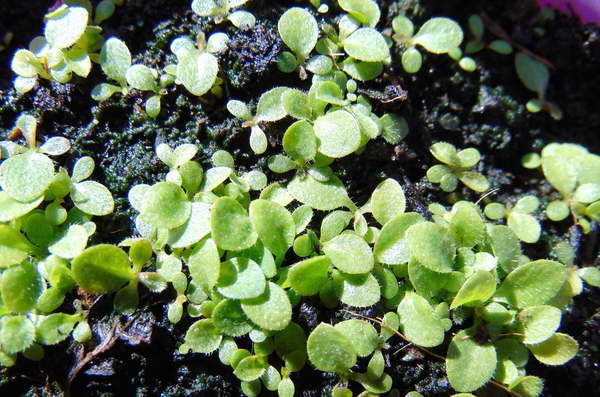

What shoots of erigeron look like photo
For seedlings, small petals are sown in pots or boxes in early March. Shoots appear for a long time, young plants develop slowly. Use fertile soil, moisten it, distribute the seeds evenly, lightly press them into the soil, do not sprinkle.
Maintain a minimum distance of 2 to 3 cm between seedlings if sowing in a shared container. Build a mini-greenhouse by covering the crops with foil, bag or glass.
Maintain a humid environment and a temperature regime of 10-15 ° C - you can place the container on a cold windowsill or closed balcony. At the end of the month, expect the first shoots. They will be thin, small, but gradually they will get stronger, take root, and grow. Water gently with small amounts of warm water.
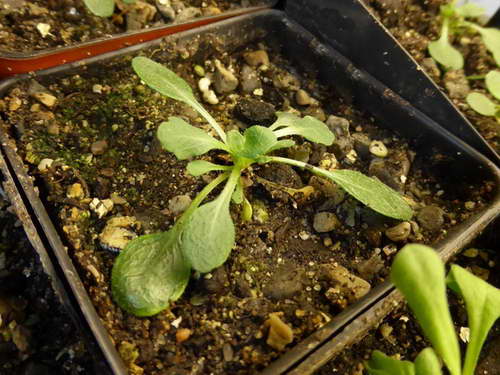

Erigeron growing from seeds photo of seedlings
When the plants get crowded, transplant them carefully in separate cups. But it is better to plant two or three seeds separately in cups, so that later you do not suffer with a pick. The strongest sprout is left, the rest are cut with scissors.
At the end of March, you can transplant small petals seedlings into the ground. Proceed carefully, it is better to pass with an earthen lump so that the fragile roots are not damaged.
Even after several months of growth in a permanent place, the plants will not be particularly strong, the first years should be covered for the winter so that the roots do not freeze.
Application in landscape design, what to combine with, what to replace
Small petals are often used in landscape design. Thanks to him, you can form the foreground of a green fence along the path (Karvinsky's small petal or hedgehog will help with this). The key point is the selection of the required type of perennial.
With the ability to combine varieties of color shades, you can achieve the formation of spectacular compositions.
Annual or perennial it does not matter, small petals go well with such plant varieties as: Heuchera, Daisies or Liatris.
Despite the fact that the petals of small petals do not stand out with a decorative effect, they are able to create the illusion of a green carpet.


